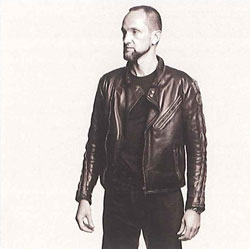Rui Chafes
Rui Chafes Lisboa ¶ 1956
 |
|
| Créditos fotográficos / Photographic credits: Abílio Leitão |
He completed his sculpture course at the Fine Arts School of Lisbon, and began his exhibition career in the second half of the 80s. In his first individual exhibitions, Chafes presented sculptures/constructions that literally occupied the whole of the show rooms, engaged completely in scale subversion and even in going beyond the exhibiting space. With meaningful disparities in the used materials (trunks and canes, HDF flakes, wood strips, plastic), in light and colour, the experience of forms was reaffirmed, forms whose organic, primitive origin is deduced and whose dynamics of growth and outburst hamper any kind of stable atmosphere, and are not able to imprison its existence within a protective cocoon. However, a certain tendency to the delimitation of the forms was already perceptible, and it is its development that would become his future, disciplined course as a sculptor. ¶ By the end of the 80s, he stills presents organic-suggestive forms, as if we were facing shells of the dead-born or the prostheses of crumbling humanoid machines, but in the last year of the decade he exclusively creates black-painted iron pieces, which becomes his stock-in-trade afterwards. ¶ In the work produced in the 90s, the most outstanding trait is his formal austerity and restraint, presiding over the creation of objects based on method-driven, rigorous drawings, and constructed along strict rules of symmetry and balance. In successive series of sculptures than often remind one of invocation places (habitation, contention, annihilation) for absent bodies, the sense of order exists in tandem with the evocation of violence, through the forms that resemble weapons and aggressions, and whose dimension of organic convulsion, despite its apparent coldness, imply a strongly felt physical and sensorial allure. ¶ In the last years, the artist has produced works of a grand scale, very often in dialog with the natural or architectural spaces in which they're exhibited. As paradigms for this phase, one should mention the large exhibition of his works at the Pena Palace and at the Natural Park of Sintra and works presented in the Netherlands and Belgium.
http://cvc.instituto-camoes.pt/biografias-en/rui-chafes-91319-dp2.html#sigFreeId23470e9c17


